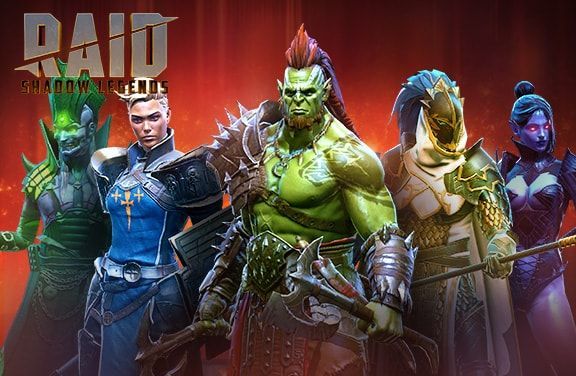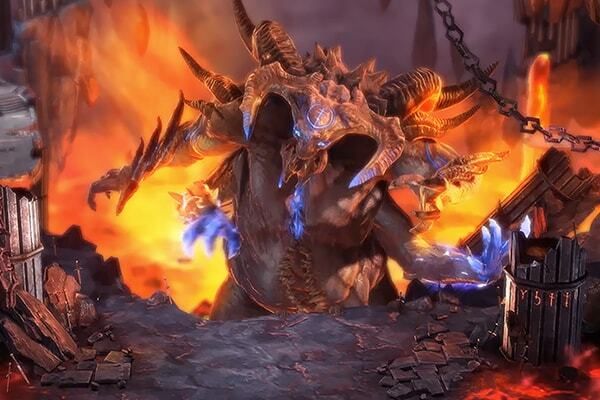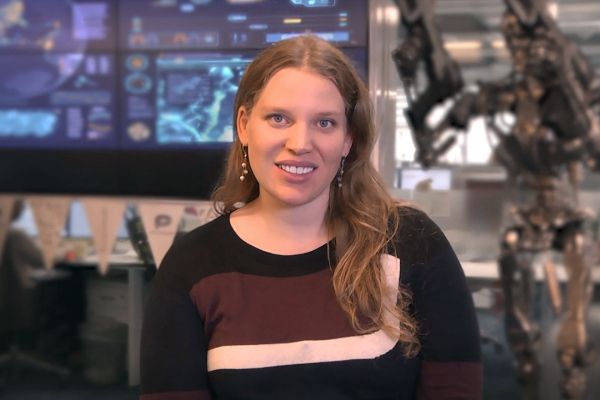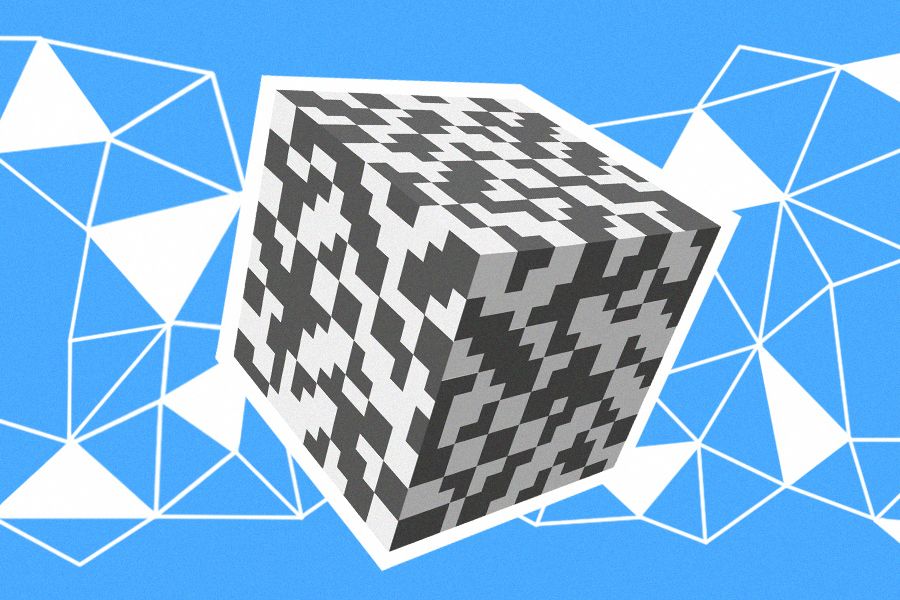RAID: Shadow Legends’ Cursed City Mode: Challenges of Game Design
This text is a translation of an article originally published on GameDev DOU.
My name is Viacheslav Hrevtsov and I’m a Game Designer for RAID: Shadow Legends at Plarium. At the end of 2023, we released one of the most extensive features for our team development-wise - the Cursed City.
In this article, together with colleagues from the Game Design Team, Volodymyr Medvid and Mykyta Bohutskyi, we will share information about how the new Cursed City mode was created. It’s gonna be our case study as to why doing a closed playtest for employees is a good idea, how best to build a reward system, and why reusing Champions can be a great thing. We'll also share ways to resolve development issues and tips on how to prevent them.
Cursed City is a challenge with a monthly-rotation where players travel through a city filled with dangerous enemies. They will have to fight under special, constantly changing conditions. There are 100 Stages waiting for the player, culminating in a battle with the final Boss at the top of the Eclipse Tower.
Challenge 1. The Mode is too difficult
Early concept
Before the Cursed City took on its final form, it went through many changes. From the beginning, the feature was earmarked as the 2023 headliner for RAID. To start creating the concept, we collected and analyzed, in detail, the wishes of players over the years.
Based on this, a number of key points were highlighted.
- Players enjoy figuring out ways to defeat the various Bosses in the game.
- The feature should not take up a lot of playing time and clash with other game modes.
- It should be a solo PvE mode - an adventure that the player can enjoy at their own pace.
In addition to the wishes of the players, the feature should also take into account our goals.
- Confirm the statement "All Champions in the game are important."
- Reach a large number of players and engage an audience with different gaming experiences.
RAID has a lot of interesting Champions, but there weren't enough places in the game where players could use them to their full potential. We wanted to create a mode that would help with this, so we decided to use an already proven method of introducing restrictions.
Champions in the game are represented by different Factions, Affinities, Rarities and Types. By playing with combinations of these parameter restrictions, we could encourage players to use certain Champions at different Stages. But introducing such restrictions could become a hard blocker for players who do not have enough Champions in their Collection, which is already against our goals. Therefore, we decided to make the feature non-linear to give players the opportunity to bypass the blocker and continue their journey.
In the early stages, it was planned that players would be able to start from any side of a symmetrical "pie-map" and move towards its center. The closer to the center, the more difficult the opponents. At the end of each piece of "pie", a guard waited with one of the keys to the main Boss.
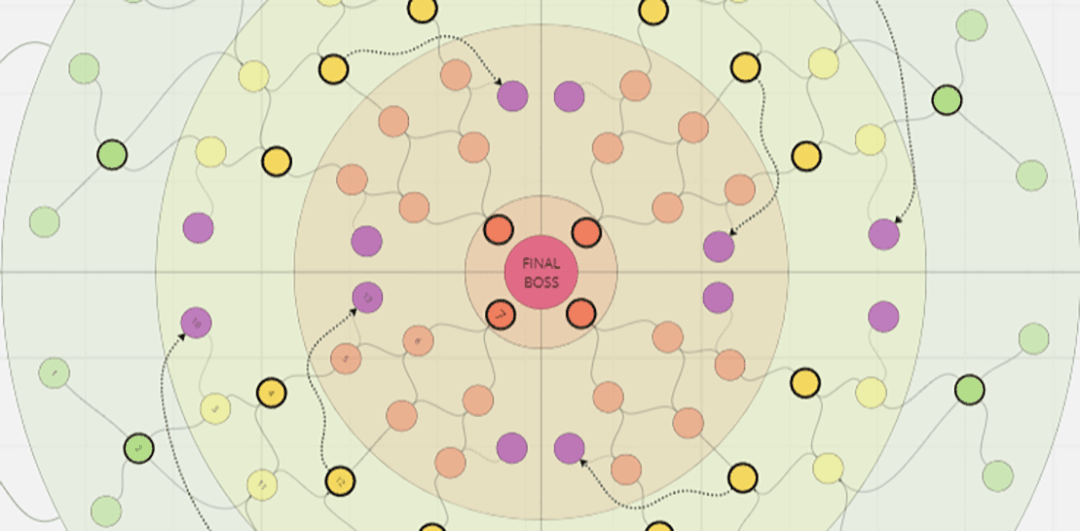 Early concept of the feature
Early concept of the feature
However, we decided to abandon this option for two reasons.
- The requirements to gain access to the Boss were too difficult.
- Advancing through a symmetrical map didn't look diverse enough.
In the second iteration, we decided that it would be a city with four unique districts and a maze of streets. In each area, you need to get the access key to the main Boss, but it is not necessary to complete all the Stages. Difficulty increases from the bottom up: a large proportion of players will be able to pass at least some part of the Cursed City, and the most experienced will reach the end and fight the final Boss.
This option remained the main one for a long time - until a playtest was conducted among our co-workers.
Playtest and rethinking of the task
When most of the work was done, we had the opportunity to test the feature under close-to-real conditions. We conducted a closed playtest among employees with different game experience and accounts of different strengths. A playtest’s implementation is an integral part of all the great features in RAID, as it helps us better detect hidden issues and fix them in advance.
After the end of the test, we collected detailed feedback and saw that even with the high level of difficulty and some complication while playing, players with different gaming experience and account strength had the same fun traveling around the Cursed City.
After that, we decided to expand the target audience even more, because if the feature is interesting to play, then we should provide this experience to as many players as possible.
Final changes
The first step towards the goal of expanding the audience was the addition of an easy mode, which we termed “Normal”.
The second, but no less important, step was to change the number of keys needed to access the main Boss. We decided to remove the key from the most difficult area - Soulcross. With this, more players would be able to challenge the main Boss, and the most experienced ones would continue to explore Soulcross for even more valuable rewards.
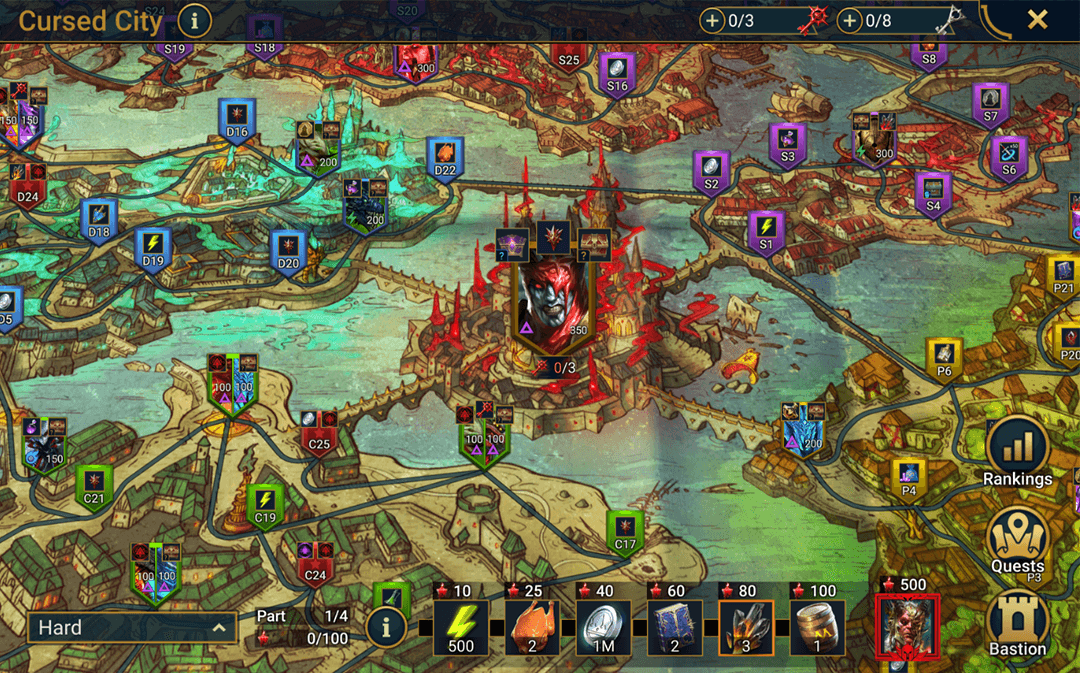 Final structure of the city
Final structure of the city
Our tips
When looking for a solution, always keep the main goals in the forefront. You may come up with numerous interesting ideas that achieve various goals, but make sure that they also correspond precisely with the key goal.
Challenge 2. Interface restrictions
Creating a map of the city was a separate challenge. Before us was the task of turning a scheme with vertices and nodes into a map of the city.
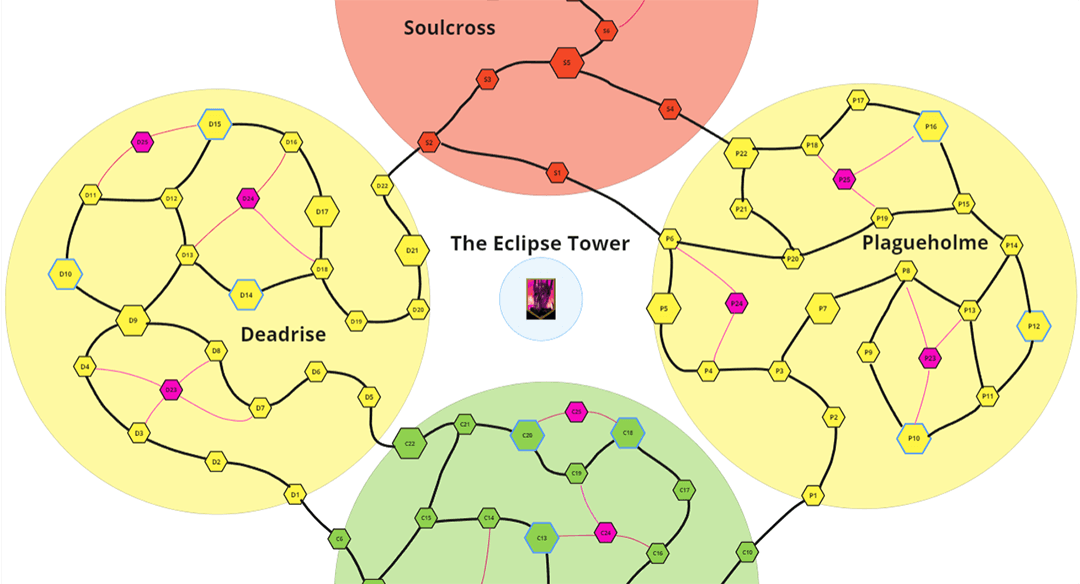 City diagram with vertices and nodes
City diagram with vertices and nodes
We invited professional cartographers to help adapt our scheme to urban development. Then the art team painted the whole city in detail.
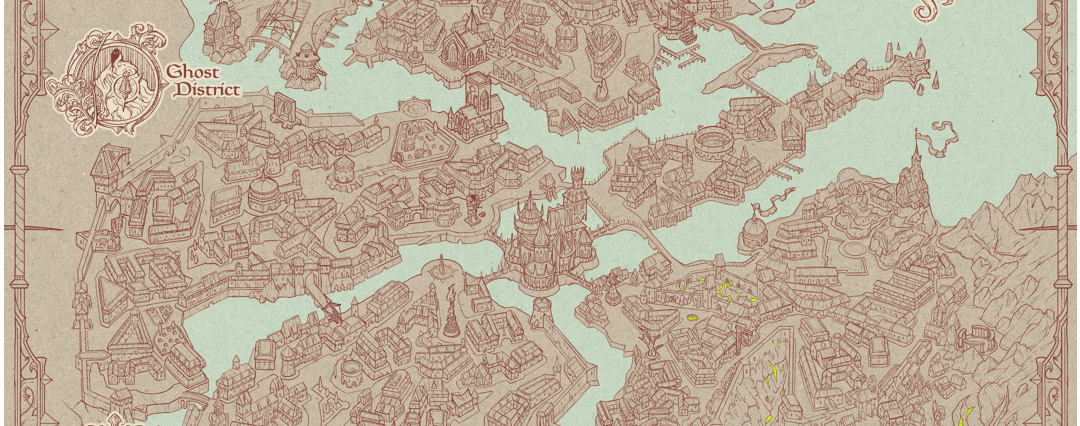 Cursed City concept
Cursed City concept
The map looked good; all the streets of the city clearly corresponded to the given scheme. However, there were problems with the designed UI, which looked overloaded. The UI/UX team tried many options with the size of elements, colors, and the amount of information required to make everything convenient and readable.
However, we still weren’t able to completely solve this problem. Stages that were located very close to each other remained visually overwhelming. Also, after the final balance was approved, some Stages now had two reward slots instead of one as originally planned. It overloaded the interface and spoiled the overall impression.
Then the Client Development team, which is responsible for developing the client part of the project on Unity, came to the rescue. The developers suggested adding zoom to our map. At first, we thought that it would not be very convenient, but when we tested this functionality on the prototype, we immediately understood that this was the solution!
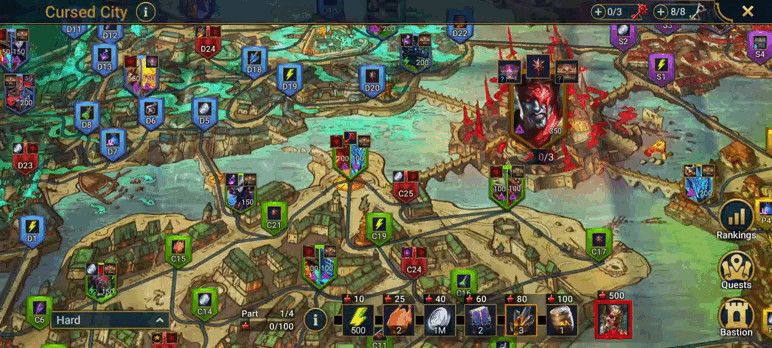
Our tips
It is possible to develop a convenient and understandable UI for anything! If you find your UI is inconvenient, you can redesign, experiment, and brainstorm with colleagues, test prototypes, and don't be afraid to start from scratch. Even from the craziest idea, you can glean something useful that will bring you closer to the final version.
Challenge 3: what rewards to offer experienced players
It is important to us that the player's time and effort spent in the Cursed City are appropriately rewarded. One of the challenges was making sure the rewards were balanced for the feature so that players would want to fight for them.
RAID has been actively developing for 5 years, with activities and new Champions constantly added to the game. During this time, many resources have been created that have great impact and value for players. In this feature, in addition to standard resources, we wanted to add something new and unique. Rewards should be interesting for both experienced players and beginners.
To achieve this, we have developed several types of rewards for completing:
- Stages
- Awakened Stages
- Boss Stages & Double Boss Stages
- Quests
Rewards for completing regular Stages are the basic rewards that players get by completing the main Stages of the Cursed City. The stronger the opponents, the better the reward.
Certain rewards, such as Cursed Remnants, are most likely to be obtained in the hardest district, Soulcross. With the help of Cursed Remnants, players can summon Mythical and Epic Champions. This part of the content is aimed more at high-level and experienced players.
Awakened Stages can only be completed with a certain number of Awakened Champions. They are optional and do not block the player's progress in the feature, but they also have special rewards that are well worth the effort.
Players receive Cursed Candles as a reward for completing Quests. You can complete Quests only in the Cursed City. By collecting Cursed Candles, players progress along a reward bar, at the end of which, a unique Mythical Champion awaits them. Some of the Quests are tied to the completion of all the Stages of the Cursed City, so not all players will be able to overcome this challenge at first.
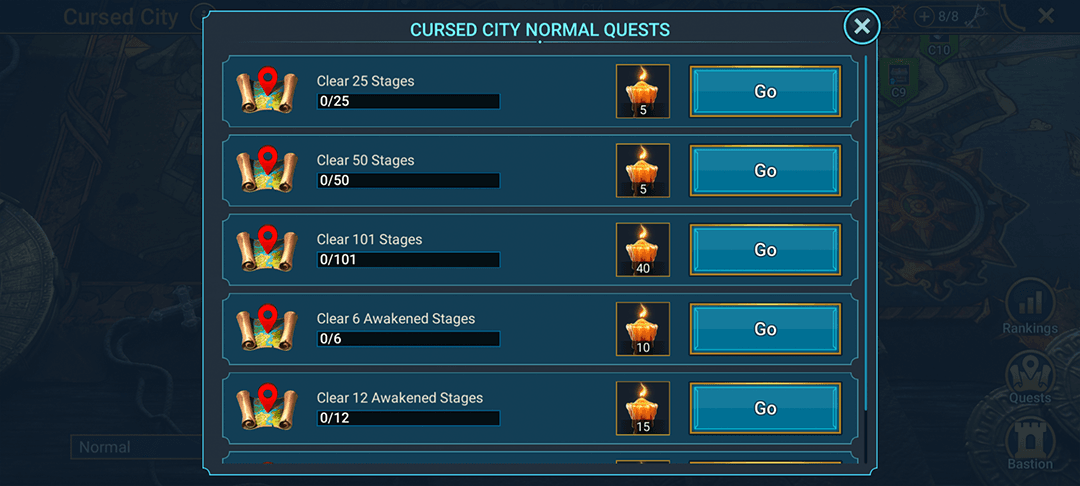
In addition, Boss Stages also contain special rewards. Players themselves decide which reward they want to hunt for and can prepare teams to complete the corresponding Stages.
Our tips
When building a reward system, take the interests of all types of players into account. Give the player the freedom to choose a strategy to get the desired reward. Of course, the player will not always be able to reach the final goal immediately, but they must see a clear path to it and be able to follow it at their own pace.
Challenge 4: Double Bosses – how to find a perfect match
In certain Stages of the Cursed City, we planned to reuse existing Bosses. However, most players already have the necessary Champions to handle them fairly easily. Therefore, we started looking for ways to make battles more interesting and more strategic from the player's point of view. Then the idea arose to make Double Boss Stages.
This idea initially seemed quite problematic in terms of implementation. We already had the experience of using multiple Bosses in the same Stage. We implemented this feature in another mode where players compete against the Hydra Clan Boss - each of the four Heads has a role in the battle and has interconnected mechanics with the other Heads. But combining Bosses with different mechanics and visuals looked difficult both on paper and in reality.
When conceptualizing Double Boss Stages, we had to pair separate, integral units of Bosses - that is, each of them already had their own purpose in the game. We analyzed their unique mechanics and strategies used by players in battles and compared their appearance.
We had to try many combinations and test the possibilities for taking them down. There were quite a lot of questions during the development process. For example, there are two dragons in the game - one of them is easy to defeat with Poison debuffs, while the other is immune to them. If a strategy only works against one, wouldn't it be difficult for players to beat both? Or a question of a visual nature; why do we need two dragons on the same Stage, or two spiders that do not match in appearance?
Once the analysis was complete and the Boss pairs were formed, we made the necessary changes to the Bosses’ skill sets to begin the next phase of work. Balancing the difficulty of the Double Boss Stages was a tough challenge, as some of them are quite strong alone. Most players already know how to fight them, but how to fight two Bosses at the same time that require different mechanics is one of the challenges we made our players face.
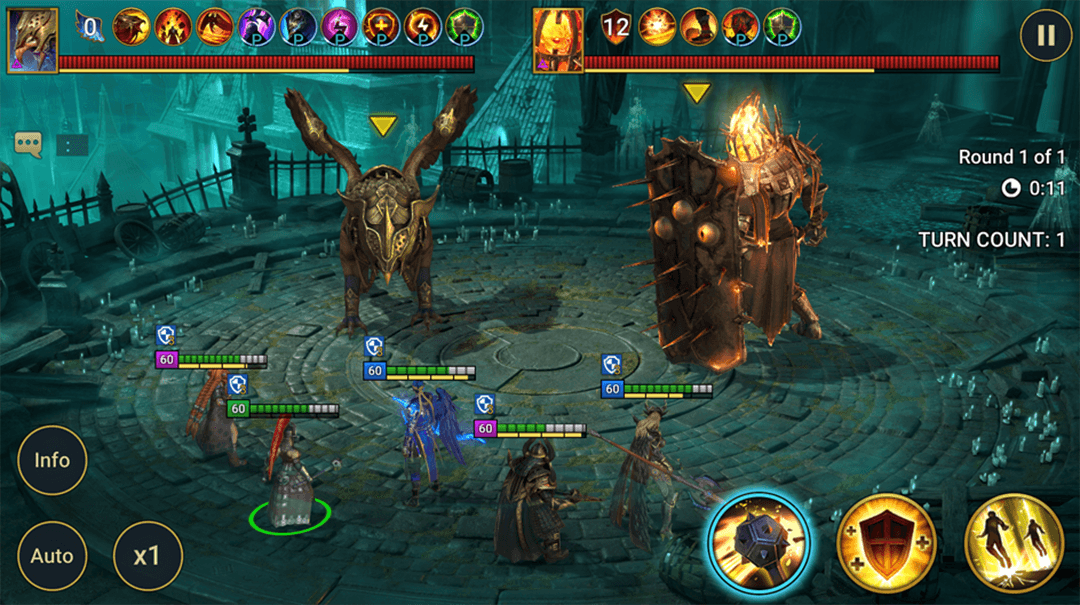
At the concept stage, we aimed to expand the number of Champions for players and use "forgotten/unpopular” ones. We solved this task by adding Champion filters, which were able to limit the use of the most popular Champions to further encourage the expansion of strategies in battle.
After several rounds of testing, we found a balance that suited us and didn't seem too difficult for players of different skill levels.
Our tips
Even if the idea seems too complicated at first, if you believe in it, don't give up too fast. Allow yourself adequate time to seek solutions for implementing it. To solve our issue, we had to go through the maximum number of combinations of Bosses, take into account their mechanics and interaction, and come up with countermeasures for them. Only then were we able to finally approve the idea. This helped us rethink the strategies of Boss battles and implement a new and interesting challenge for players.
Developing the Cursed City was challenging for the team. However, we have received lots of positive feedback from our players, and that is what is most important.
Share the article with your fellow Game Designers and RAID: Shadow Legends fans.
